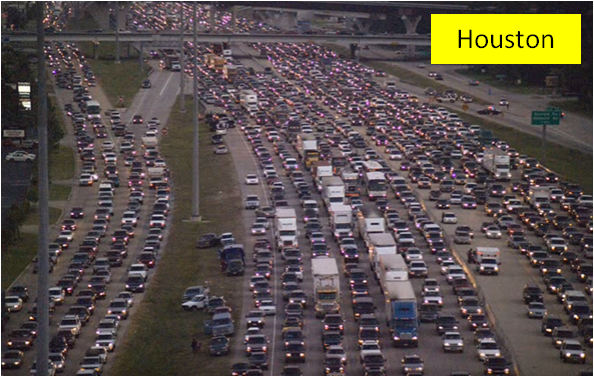The Hottest Topic of 2016 G-20 Summit in Hangzhou, China
 One of the hottest topics frequently mentioned in the 2016 G-20 Summit is Climate Change. A flashing point of the whole summit is the ceremony to celebrate the historic partnership of United States and China to formally ratify the Paris Climate Change Agreement. The same topic is also one of the most important points and outcomes addressed in the summit. The goal was to promote international collaboration on energy efficiency in order to slow down the trend of global warming.
One of the hottest topics frequently mentioned in the 2016 G-20 Summit is Climate Change. A flashing point of the whole summit is the ceremony to celebrate the historic partnership of United States and China to formally ratify the Paris Climate Change Agreement. The same topic is also one of the most important points and outcomes addressed in the summit. The goal was to promote international collaboration on energy efficiency in order to slow down the trend of global warming.
Why Was the Topic So Urgent?
While the topic was planned to be a focus of the 2016 G-20 summit, the nature was surely corresponding with it. Although linking climate change with natural disasters is still a very controversial issue, 2016 is definitely a remarkable year in number of disasters and the worldwide loss of human life and property from these disaster. Whether to believe it or not, the world temperature is increasing in this earth-changing cycle together with the increasing number of disasters.
More 2016 disaster pictures can be viewed through this link.
Suggestions from Concerned Scientists
A large number of scientists have showed their great concern on global warming. According to a study given by Earth System Science Data in 2013 and 2014, humans are actually advancing climate change and global warming by injecting about 40 billion tons of carbon dioxide into the atmosphere. On August 25, 2016, USGS released a study on global warming on the vanishing of American Pika, a rabbit-like animal living in many mountainous areas of the West part of the countries. As called by these scientists, the uncontrolled trend of global warming quite likely will lead to our own eventual extinction.
Based on the results from similar studies, scientists pointed that reducing CO2 emission is the only way to cope with global warming. They further gave the following suggestions:
- Expand the use of renewable energy and transform our energy system to one that is cleaner and less dependent on coal and other fossil fuels.
- Increase vehicle fuel efficiency and support other solutions that reduce U.S. oil use.
- Place limitation the amount of carbon that polluters are allowed to emit.
- Build a clean energy economy by investing in efficient energy technologies, industries, and approaches.
- Reduce tropical deforestation and its associated global warming emissions.
How Vehicle fuel Efficiency Is Related with Natural Disasters?
As shown in the following diagram, transportation contributes about 1/3 of carbon emission.
This means that to reduce CO2 emission effectively, factors that add CO2 emission into the air from cars must be considered. Traffic congestion is the most important controlling factor for this issue. The diagram below depicts the relationship between natural disasters and traffic congestion.
As can be seen from the picture, traffic jam increases the the amount of gas consumption, thus increases the amount of CO2 emission and air pollution, which causes more global warming. As discussed above, global warming is believed to be the reason of more natural disasters like droughts, more wildfires, and more floods.
In fact, traffic congestion has been the toughest issues in many cities of the world. Here is a picture showing a traffic jams in Houston. More traffic jams worldwide can be viewed through this link.
Methods Used to Cope with Traffic Congestion
Many methods have been used to solve the traffic congestion problem. Unfortunately, none of them is effective so far. Here is a limited list of them.
- USA:Road Widening. It slows down the traffic sometimes. I-10 across Houston is a typical example. The interstate highway finished its 4th widening in 2012. To make the situation worse, the widening increased travel time by 25 minutes for the same road section.
- USA: HOV Lanes. It is not very convenient for people. Vehicles with multiple people may use the lanes. It’s generally faster than using regular lanes. Governments encourage people park their cars in suburbs and take busses or carpools to get to work. Because it needs waiting time and lose freedom loss, it’s hard for it to because the main stream of transportation.
- China:Most highways in cities have no room to widen。
- China: “Air Rail” – Generally slow and has limited coverage.
- China: “Air Bus” – Slow and is at the stage of testing.
Issues with Highways
Compared with bullet trains, highways have the following problems:
- Low speed—Limited by road and vehicles, speed can not be increased to bullet train’s.
- High energy loss– Cars on highways use energy 5 times higher than vehicles on rails.
- Uses more land– The width of a highway lane is about twice of rail freeways.
An Effective Method
The newly invented rail freeway transportation system is believed to be an effective method to cope with global problem. It is proposed to build a 3D railway network of rail freeways on current main streets and highways. This system is expected to effectively dilute the traffic on highways and main streets, speed up the overall travel speeds of modern cities and stimulate their economies.